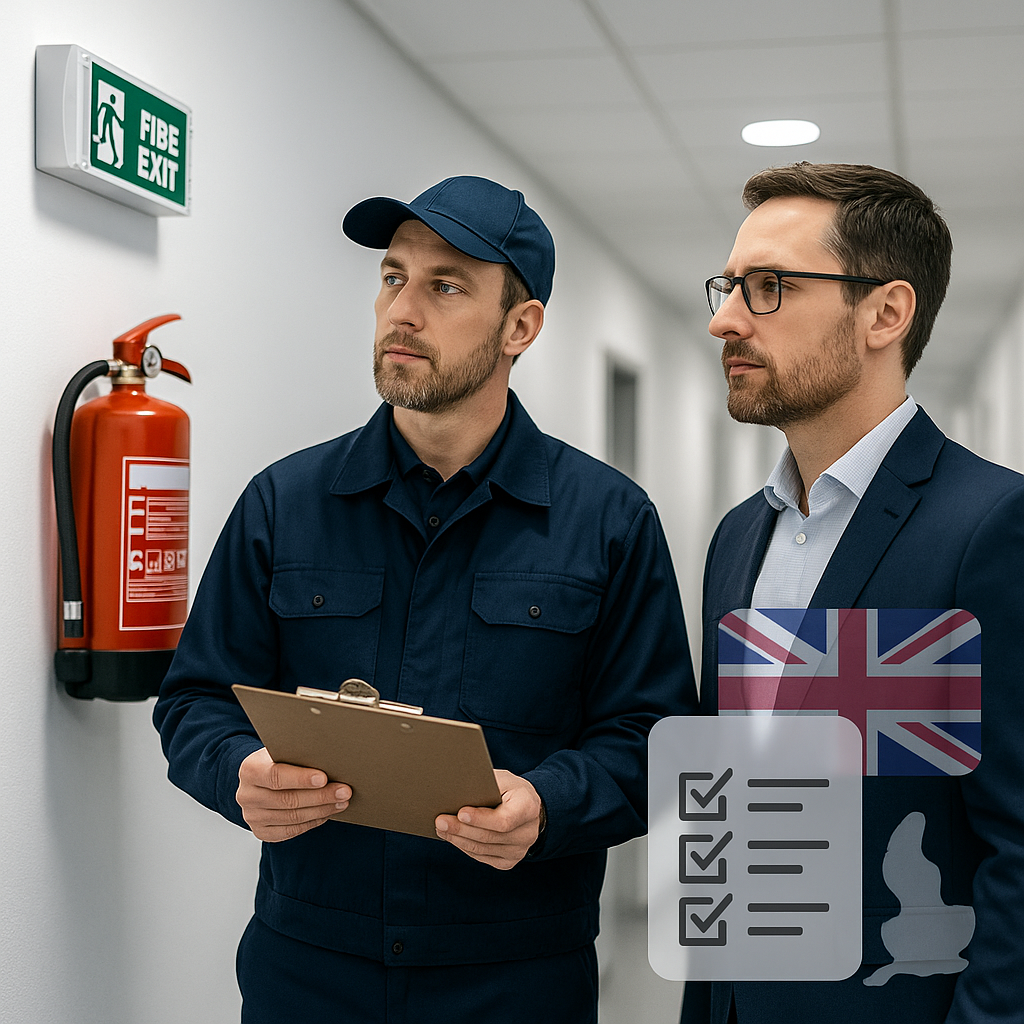Your cart is currently empty!
Tag: PEEPs
-

Surviving Your UK Fire Authority Visit: What Inspectors Look For & How to Prepare
A visit from your local fire authority can feel high‑stakes for any UK business. Fire officers aren’t there to trip you up—they want assurance that your premises are safe and compliant under the Regulatory Reform (Fire Safety) Order 2005. By understanding precisely what they’ll inspect and having the right documentation and checks in place in advance, you can breeze through their audit, demonstrate due diligence, and avoid enforcement notices or even prohibition orders.
1. What Fire Officers Will Inspect
Fire officers follow a structured approach, verifying that you have assessed risks, put controls in place, and keep accurate records. Key focus areas include:
-
Fire Risk Assessment (FRA)
-
They’ll ask for your current FRA and look for:
-
A clear identification of fire hazards (sources of ignition, fuel, oxygen).
-
A written evaluation of existing controls and any additional measures needed.
-
Date of last review and signature of the responsible person.
-
-
-
Escape Routes & Fire Doors
-
Escape routes must be unobstructed, clearly way‑marked, and lead directly to a place of safety.
-
Fire doors must self‑close, have intact seals, and free‑swing closing tested within the past 6 months.
-
-
Fire Detection & Alarm Systems
-
Inspectors will test your alarm and check your test log—weekly “bell‑only” tests and annual full system services must be recorded.
-
Smoke detectors and manual call points are sampled to ensure coverage.
-
-
Emergency Lighting & Signage
-
Emergency lights should illuminate escape routes for at least 1 hour during a power failure; look for monthly test logs.
-
Exit signs and fire‑action notices must be clearly visible at every doorway and at head height.
-
-
Fire‑Fighting Equipment
-
They’ll inspect extinguishers (A, B, C types) to confirm correct placement, pressure gauge readings in the green, and recent service labels (annually and five‑year overhaul).
-
Hose reels (if present) must be unobstructed and tested within the past year.
-
-
Staff Training & Evacuation Drills
-
Officers will request training records showing all employees have fire‑marshal or basic fire‑safety training within the last 12 months.
-
They’ll ask when your last fire drill took place, inspect drill logs (times, attendance, lessons learned), and review any PEEPs (Personal Emergency Evacuation Plans).
-
-
Documentation & Maintenance Logs
-
Your fire‑safety folder should be neatly organized with:
-
The signed FRA and review schedule
-
Alarm, extinguisher, and emergency‑lighting test certificates
-
Training attendance sheets and drill reports
-
PEEPs and emergency contact lists
-
-
Inspectors expect to see each entry clearly dated, signed off, and any corrective actions logged.
-
2. Preparing in Advance: A Pre‑Visit Roadmap
A. Compile Your Fire‑Safety Folder
-
Section 1: Latest FRA with date/review notes
-
Section 2: Alarm & detector test logs (weekly, annual)
-
Section 3: Extinguisher and hose reel service certificates
-
Section 4: Emergency‑lighting test records (monthly/annual)
-
Section 5: Staff training registers and drill logs
-
Section 6: PEEPs, emergency contacts, and evacuation plans
Tip: Use clear divider tabs and a contents page so the officer can find any document within seconds.
B. Conduct a Mock Inspection
-
Walk every escape route, check door closers, and measure that no stock is blocking corridors.
-
Trigger your own alarm test, record it, and visually inspect smoke detectors.
-
Check expiry dates and gauge readings on all extinguishers; ensure no corrosion or damage.
C. Gap‑Analysis & Action Plan
-
Compare your mock‑inspection findings against your FRA.
-
Log each minor fault in an Action Tracker with owner and completion date.
-
Tackle high‑risk issues (blocked routes, unserviced equipment) immediately.
3. Day of the Official Visit
-
Designate a Fire‑Safety Lead: One knowledgeable staff member should host the officer from start to finish.
-
Present Your Folder at the Outset: Offer the binder before the walkthrough begins so they know you’re organized.
-
Guide the Tour: Walk them through key areas—alarm panel, extinguisher stations, muster points—highlighting compliance measures.
-
Record Observations Immediately: If they note a correction, update your Action Tracker on the spot.
4. Post‑Inspection Follow‑Up
-
Enforcement Notices: If issued, you have a set deadline (often 28 days) to complete specified actions—log your compliance and notify the authority.
-
Prohibition Notices: Rare but serious—address these immediately or seek professional legal advice.
-
Celebrate & Communicate: Once you’ve passed, use the visit as a marketing tool—mention your compliance in staff communications and customer-facing materials.
Get Ready with Professionally Designed Templates
Don’t scramble last‑minute to pull together paperwork. Contact us today to have all your required fire‑safety documentation templates—from FRA forms and test logs to PEEP sheets and drill records—professionally designed and fully tailored to your business.
📞 Contact us to download your Fire‑Authority Pre‑Visit Checklist and get bespoke template packages. Be confident, be compliant, and turn your next UK fire authority visit into a demonstration of excellence!
-